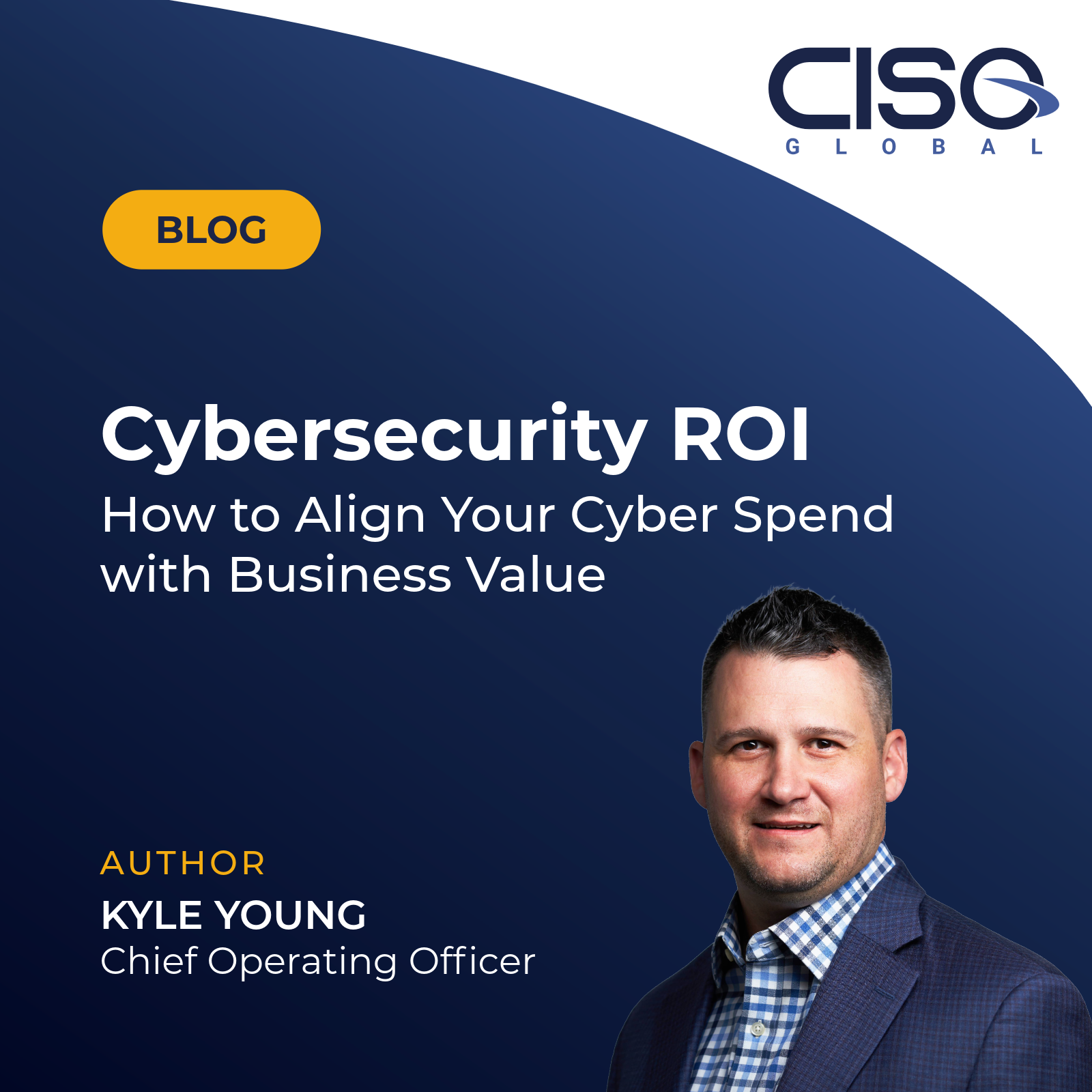Cybersecurity ROI: How to Align Your Cyber Spend with Business Value
Kyle Young, Chief Operating Officer (COO)

Even with solid controls in place, no organization is immune to attack. The goal isn’t perfection. It is consistency, visibility, and response readiness.
Cybersecurity spending has ballooned over the last decade. Budget requests come with urgency, fear, and often with technical jargon that can feel more emotional than rational. But good financial decisions are not driven by fear. They are based on risk, return, and clear business alignment.
For CFOs and financial leaders, the question isn’t whether cybersecurity is important. The question is how much is enough, and whether the dollars being spent are reducing risk in a meaningful, measurable way. Security is a business decision, not a technology one. And like all business decisions, it must align with priorities, probabilities, and the potential for loss.
Risk Is Not a Feeling
In financial terms, risk is a formula. Probability multiplied by impact. Every day, business leaders assess whether the risk of a specific event justifies the cost of preventing it. Cybersecurity should be approached in the same way. If an incident is likely to cost $1 million, it would not be rational to spend $10 million to prevent it unless you believe it would happen more than ten times. You cannot afford to protect every asset as though it is the vault at Fort Knox. You need a layered, cost-effective approach that focuses on what matters most. Not all systems carry the same impact if breached. Not all data is equally sensitive. Spending decisions should reflect this reality.
Start with the Right Questions
Before signing off on another tool or expanding an internal team, finance leaders should ask:
- What specific risk does this reduce?
- What is the likelihood and impact of that risk?
- What existing controls are there to address the risk?
- Are we duplicating capabilities unnecessarily?
- Can this be achieved more efficiently through a partner?
Outsourcing security operations is often the smarter financial choice for businesses that are not in the IT or cybersecurity space. The true cost of in-house security goes far beyond salaries. It includes tools, training, turnover, and the overhead of managing a highly specialized, constantly evolving discipline.
In contrast, firms like CISO Global provide mature, full-spectrum cybersecurity services as a managed offering, allowing businesses to focus on what they do best. Rather than trying to become security experts, you gain access to a team of them.
Where the Best ROI Lives
Not every dollar spent on cybersecurity produces the same value. Surprisingly, some of the most effective security controls are also among the most affordable. Employee education and awareness campaigns deliver outstanding returns. One well-crafted phishing email can bypass millions of dollars in perimeter defenses. A trained employee who spots and reports that email prevents the incident entirely.
Phishing simulations, basic awareness training, and exercises that condition users to think critically are cost-effective tools with measurable impact. These efforts turn your people from risk factors into protective assets.
Other high-ROI investments include:
- Modern email security that filters out advanced phishing attempts
- Endpoint protection that can detect and isolate unusual behavior
- Offline, immutable backups that cannot be encrypted or deleted during an attack
These controls don’t break the budget, but they dramatically increase resilience.
You Can’t Prevent Everything
Even with solid controls in place, no organization is immune to attack. The goal isn’t perfection. It is consistency, visibility, and response readiness.
That’s why an incident response plan is not optional. The plan should include an experienced team, already under contract and familiar with your environment. When an incident occurs, minutes matter. Contracts should be in place before they are needed.
In addition to planning and controls, consider the financial protections available. Cyber insurance is one option, but not the only one. At CISO Global, we offer platforms like CHECKLIGHT that include warranties and financial coverage in the event of failure. For finance leaders, this adds a layer of predictability and protection to the balance sheet.
What’s at Stake
Cybersecurity spending is not just about protecting systems. It is about protecting revenue, customer trust, intellectual property, and operational continuity. When systems go down, orders don’t ship, customers don’t get service, and reputations suffer. Financial decisions should account for both the tangible losses (revenue, fines, legal costs) and the intangible ones (reputation, customer confidence, and brand equity).
Spend Smarter, Not Just More
The pressure to invest in cybersecurity will continue to grow. The solution is not to reflexively say yes to every new product or hire. Nor is it to cut spending blindly.
The answer is to optimize. Spend where the return is clear. Focus on the basics that prevent most incidents. Ask the hard questions. Demand accountability and clarity. And partner with firms who bring expertise, scalability, and financial discipline to your security program. Cybersecurity is not a special case. It is a business function. And with the right approach, it can be managed like one.